Maxwell Museum of Anthropology volunteers playing a crucial role in the preservation of research on the Southwest
May 16, 2023 - Irene Gray
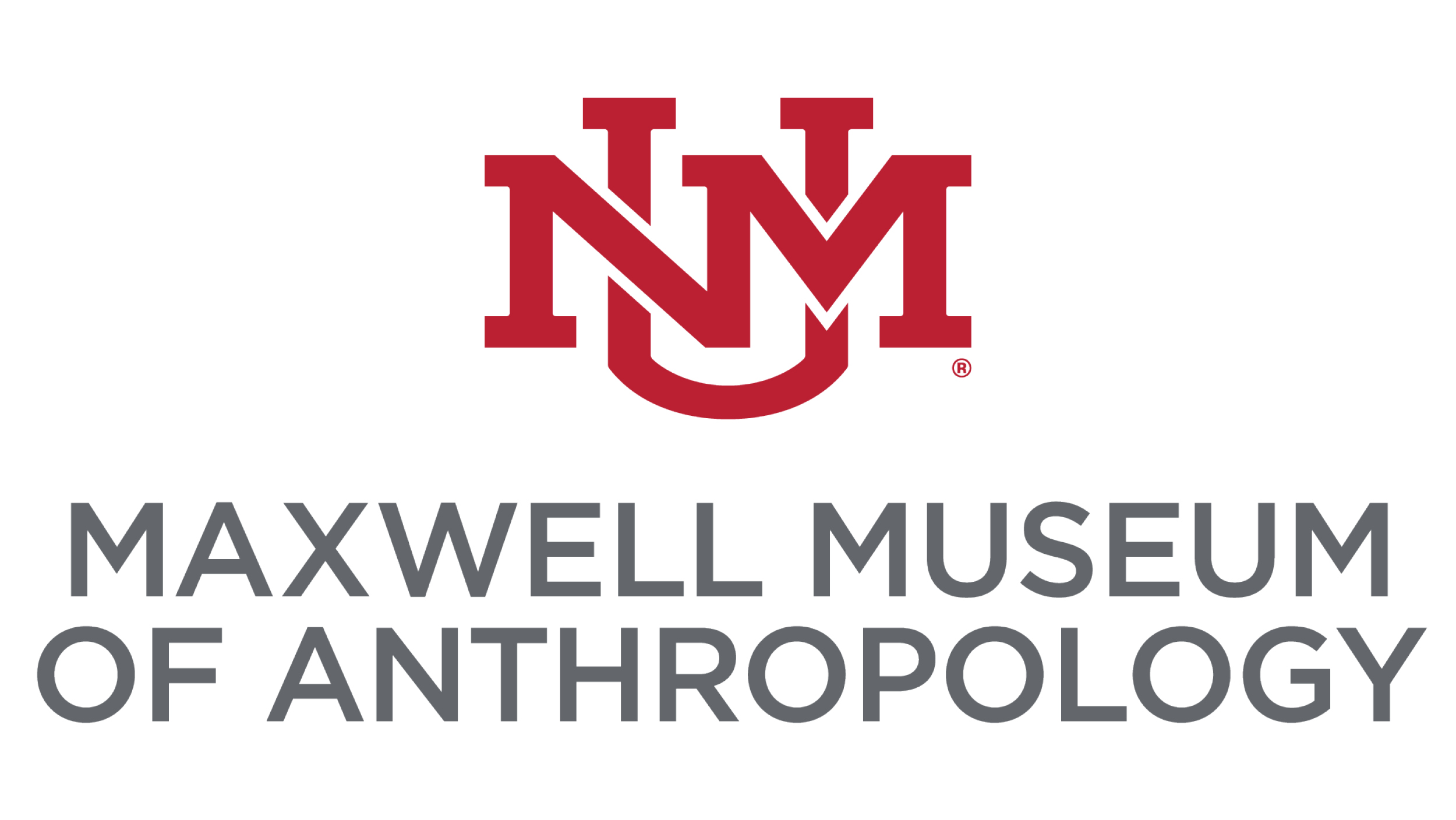 For the past 20 years, Wednesday mornings have been a bustle of activity in a very unlikely spot: the basement of the Hibben Center for Archaeology. Thanks to a special group of volunteers who dutifully gather here every week, archaeological collections held by the Maxwell Museum of Anthropology are being preserved for future generations – and making a tremendous difference in ongoing research on the Southwest.
For the past 20 years, Wednesday mornings have been a bustle of activity in a very unlikely spot: the basement of the Hibben Center for Archaeology. Thanks to a special group of volunteers who dutifully gather here every week, archaeological collections held by the Maxwell Museum of Anthropology are being preserved for future generations – and making a tremendous difference in ongoing research on the Southwest.
It all started in 2003 when the former chair of Anthropology, Linda Cordell, initiated an effort to revitalize research on the site of Tijeras Pueblo, where she had directed excavations some two decades earlier. Some 500 boxes of artifacts from previous excavations at the site had been sitting in an offsite collection storage facility for years. However, the project lacked sufficient funding and resources to move forward.
Coincidentally, at this same time, under Curator Dr. David A. Phillips, the Maxwell Museum had begun reorganizing all of its archaeological collections in the then brand new Hibben Center building with help from volunteers and students.
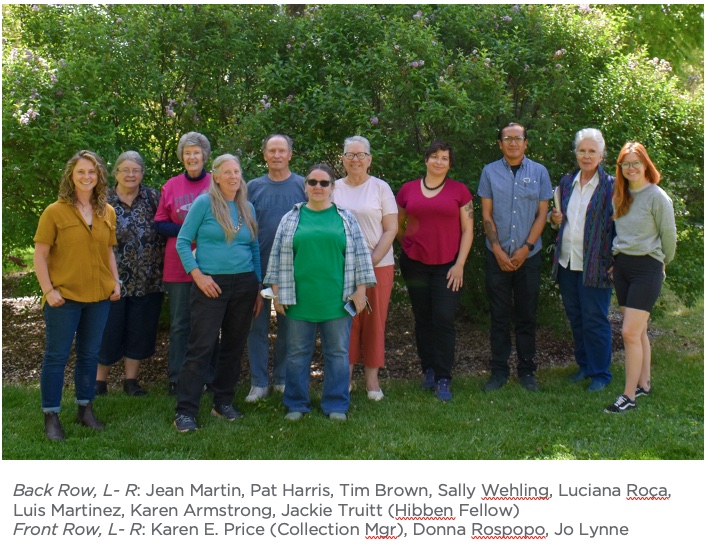 Karen Armstrong, who had been a graduate student under Cordell, joined the volunteer team and reorganized the Tijeras excavation records and artifacts with the help of volunteers from different organizations. The project received a boost when the Forest Service, the Albuquerque Archaeological Association, and the Museum contributed funds, which significantly helped the project.
Karen Armstrong, who had been a graduate student under Cordell, joined the volunteer team and reorganized the Tijeras excavation records and artifacts with the help of volunteers from different organizations. The project received a boost when the Forest Service, the Albuquerque Archaeological Association, and the Museum contributed funds, which significantly helped the project.
Armstrong credits Cordell for her leadership in ensuring that these artifacts were curated properly, “Linda was an incredible force in all of this. She led many significant projects throughout the Southwest and recognized the importance of properly curating the artifacts from these digs, which was not commonly done.”
This is because grants and contracts typically provide funding for fieldwork and analysis but not for the long-term care of archaeological collections. As a result, the collections from Tijeras and many other UNM excavations remained housed in their original field bags and boxes for decades, awaiting further care.
In 1990, the government adopted regulations to address the "curation crisis” in the care of federally owned collections. However, the regulations did not address the costs of caring for collections, and it continued to be the case that few archaeologists were trained in proper museum curation techniques.
A major obstacle to the Tijeras Pueblo project was maintaining a sustained volunteer effort. Thanks to the museum staff’s dedication to both the project and its volunteers, the project was able to flourish. Nearly the entire archaeological collection from Tijeras Pueblo (LA 581) was reorganized into new archival bags and boxes, carefully labeled and documented, and rehoused at the Maxwell Museum of Anthropology.
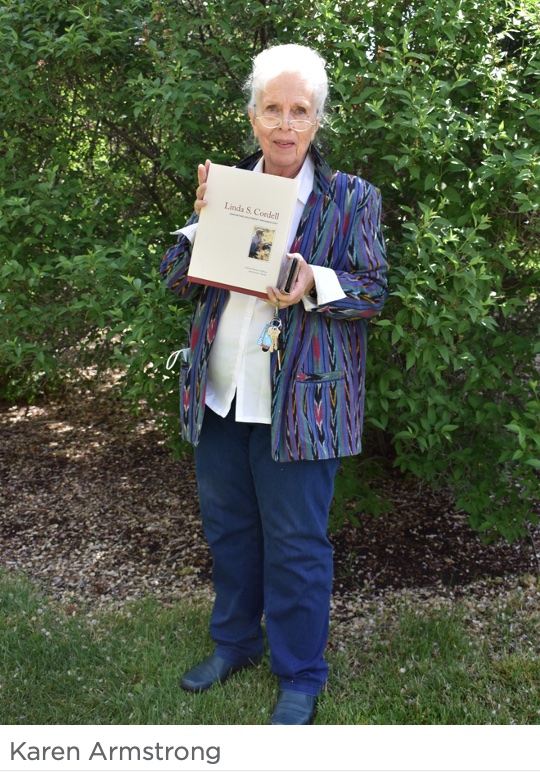 Karen Price, the archaeology senior collections manager at the Maxwell Museum, has had the pleasure of working with this special group for the past seven years. She says, “The crew’s effort contributes enormously to our ability to properly care for the archaeological collections. Because of the size of the group and their strong work ethic they are able to process over 300 boxes per year. This, in turn, means thousands of artifacts are rehoused, catalogued, and accessible to researchers and descendent communities.”
Karen Price, the archaeology senior collections manager at the Maxwell Museum, has had the pleasure of working with this special group for the past seven years. She says, “The crew’s effort contributes enormously to our ability to properly care for the archaeological collections. Because of the size of the group and their strong work ethic they are able to process over 300 boxes per year. This, in turn, means thousands of artifacts are rehoused, catalogued, and accessible to researchers and descendent communities.”
Two very simple factors have helped sustain the group of volunteers for so many years: T-shirts and a large rectangular table. The green t-shirts were purchased because they were on sale at the time, but they have since become an enduring symbol of the group’s efforts, proudly displaying their motto: Ordo Ab Chao (order from chaos).
The simple rectangular table helped transform the activity into a fun social hour where they were able to gather with friends rather than working in silence at individual tables.
“We have a lot of fun,” Armstrong says, “We’re here because the work is interesting to us, but oftentimes we’ll leave here when we’re done and go have lunch together just to spend more time with one another. We’ve become a really close group of friends.”
Tim Brown, who has been volunteering his Wednesday mornings since 2006 echoes Armstrong in this assertion. For him, the most enjoyable part of the experience has been “the people and learning.”
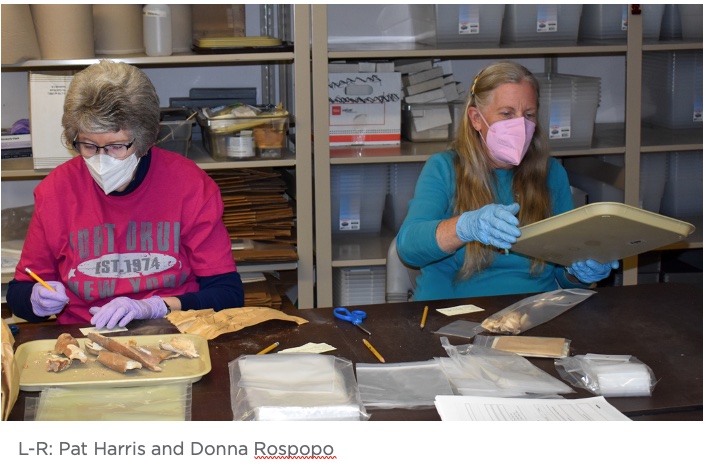 Donna Rospopo, who began volunteering at the museum about a year ago, adds that there has been a lot of purpose in the experience for her, “I’m interested in archaeology and found I could do my part in helping out by coming to help sort out all of the artifacts that have been dug up and deposited at the Maxwell.”
Donna Rospopo, who began volunteering at the museum about a year ago, adds that there has been a lot of purpose in the experience for her, “I’m interested in archaeology and found I could do my part in helping out by coming to help sort out all of the artifacts that have been dug up and deposited at the Maxwell.”
Once these items had been sorted, however, the group from the Tijeras project ran into another large hurdle: how to catalog them all.
One volunteer, the late Lucy “Lou” Schuyler, took it upon herself to assign the bags of artifacts unique catalog numbers and input data into a spreadsheet, which was later imported into the Maxwell Museum’s collections database. Now, instead of having to look over hundreds of boxes, it is possible for staff and researchers to locate and retrieve the artifacts needed in a matter of minutes.
The Tijeras project was the catalyst for many more, and in the past 20 years, the Wednesday morning volunteers at the Maxwell Museum have logged thousands of hours of their own personal time in the pursuit of improving the condition of over 4,000 boxes and access to numerous archaeological collections, including the important sites of Pottery Mound, Sapawe, and San Gabriel del Yunque.
They are supported by Maxwell staff, who work with the group to identify which collections to work on next, bring the collections from the offsite storage facility, and make sure all needed supplies and materials are on hand.
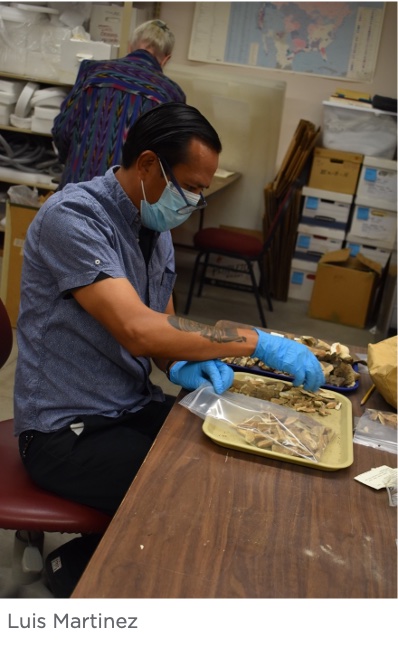 Dr. Kari Schleher, curator of archaeology, says “The volunteers contribute immeasurably to the Museum’s efforts to document and rehouse thousands of boxes of uncatalogued legacy archaeological collections from nearly a century of UNM archaeological projects. In so doing, they are rescuing major archaeological collections from decades of neglect, ensuring their accessibility into the future, and restoring their potential for research and teaching.”
Dr. Kari Schleher, curator of archaeology, says “The volunteers contribute immeasurably to the Museum’s efforts to document and rehouse thousands of boxes of uncatalogued legacy archaeological collections from nearly a century of UNM archaeological projects. In so doing, they are rescuing major archaeological collections from decades of neglect, ensuring their accessibility into the future, and restoring their potential for research and teaching.”
It is for this very reason that the Director of the Maxwell Museum, Carla Sinopoli, is so grateful for the time and care the volunteers have dedicated over the past 20 years, “The archaeology volunteer ‘crew’ has made tremendous contributions to the Maxwell Museum’s ability to care for and make accessible the extraordinary archaeological collections entrusted to our care. We greatly value them and all of the volunteers who give so much to the Museum – we could not do all we do without their generosity and support.”
